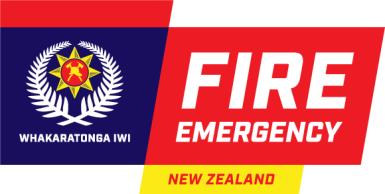

 National Headquarters
National Headquarters
Level 12
80 The Terrace
PO Box 2133
Wellington
New Zealand
Phone +64 4 496 3600
13 April 2021
Alan Thompson
By email: [FYI request #14908 email]
Dear Alan
Information Request – Grass Curing Measurements
I refer to your official information request dated 12 March 2021 asking for information about grass
curing measurements.
I first answer your general questions:
a) How many “Degree of Grass Curing” measurements are typically conducted at/near every
RAWS across NZ during a 12-month period?
b) What is the procedure/standards followed by FENZ to make these GC measurements? A
copy of the FENZ instruction manual is preferred.
Monitoring fire danger and conditions is an integral part of Fire and Emergency’s risk reduction
activities. We work with NIWA to utilise long range climate forecasting, which assists with our
planning for specific fire conditions each fire season. Our operational personnel monitor
conditions and assist in the provision of certain data (e.g. grass curing values) as the fire season
progresses and are always alert to when conditions are changing.
Grass curing is one measure used to inform our understanding of the fire risk within grass
fuels. Grass curing is the process in which grasses die or become dormant and dry out. Curing is
measured as the percentage of dead material in a grassland. The specific conditions each fire
season are different which means the timing, rate and levels of grass curing vary between years
and across districts.
As the timing and rates of curing vary year to year and between districts, there is no set base level
of frequency in assessing grass curing. When our personnel observe changing grass conditions it
prompts more formal measurements to be undertaken. It is therefore not possible to provide you
with a typical timeframe for conducting measurements.
Fire and Emergency is currently working to adapt the Grassland Curing Guide developed by the
Country Fire Authority in Australia for use in New Zealand. In the interim, Fire and Emergency has
been granted permission to use the guide. I attach a copy for your reference.



You also asked the following specific questions regarding the Remutaka Remote Automatic
Weather Station
(RAWS) at Remutaka Forest Park:
a) How many “Degree of Grass Curing” measurements are typically conducted during a rural
fire season (1 Oct - 31 March)?
b) How many “Degree of Grass Curing” measurements are typically conducted outside of the
rural fire season?
c) The geographic location where the Grass Curing measurement for the RFP RAWS are
made?
d)
What is the procedure/standards followed by FENZ to make the GC measurement at/near
the RFP RAWS? A copy of the FENZ instruction manual for this process is preferred.
During the fire season, Fire and Emergency New Zealand typically undertakes weekly desktop
reviews of grass curing around the Wellington District. These reviews include input from Rural Fire
Officers, who are regularly in the field.
Typically, during the fire season, grass curing observations/measurements are taken monthly at
the Remutaka Remote Automatic Weather Stations
(RAWS). These measurements are made
within 1000 metres of the RAWS, in ungrazed grass. These observations/measurements drop to
bimonthly during the off season.
You have the right to seek an investigation and review by the Ombudsman of this decision.
Information about how to make a complaint is availab
le at www.ombudsman.parliament.nz or
freephone 0800 802 602.
Note this response (with your personal details removed) may be published on the Fire and
Emergency website.
Yours sincerely
Raewyn Bleakley
Deputy Chief Executive, Office of the Chief Executive
encl





